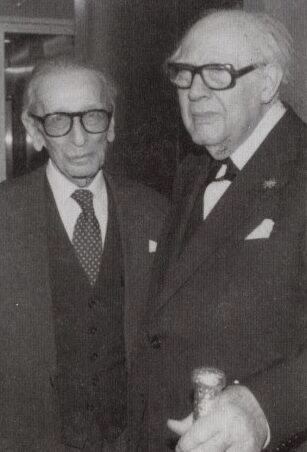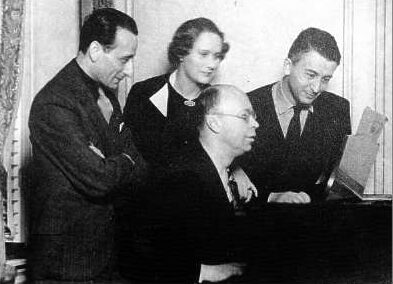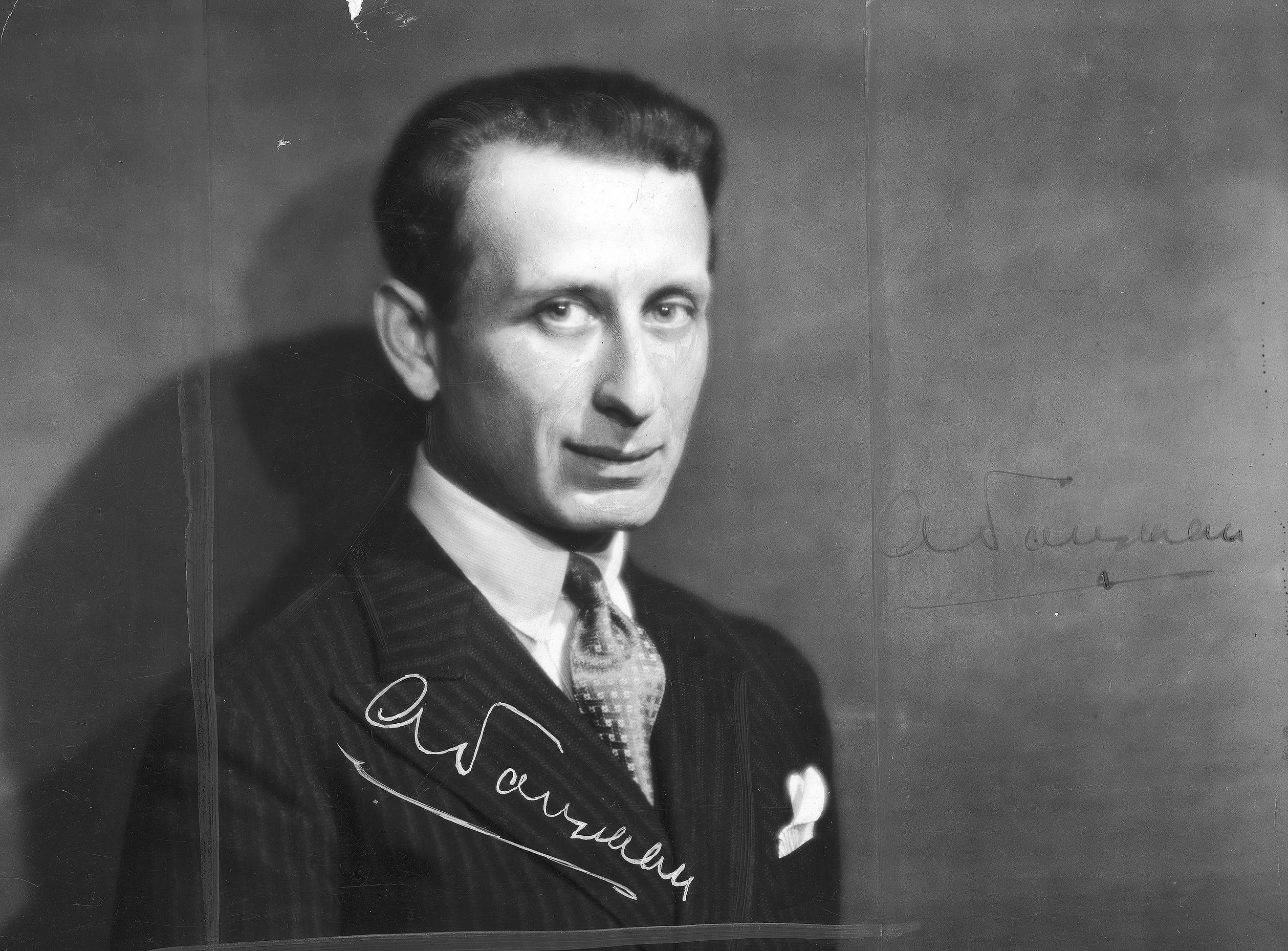Alexandre Tansman (1897-1986), a virtuoso pianist, prolific composer and conductor of Polish origin was one of the few mainstream orchestral composers who wrote for the guitar. His association and admiration for the musical personality of Andres Segovia resulted in a long term fruitful collaboration and friendship with Segovia. It has been one of the great contributions of Segovia to have inspired composers outside the guitar world to compose for the guitar. Composers such as Tansman, Heitor Villa Lobos, Manuel De Falla, Manuel Ponce, Castelnuovo Tedesco, Joaquin Rodrigo and many others wrote a considerable amount of music for the guitar and this widened and enriched guitar repertoire immensely.

Tansman was deeply inspired by Chopin’s music (he dedicated at least two major compositions to Chopin) and just like Chopin, Tansman spent a lot of his creative years in Paris, where it is said that he found his own style and voice. He was considered one of the most prominent contemporary representatives of the centuries-old tradition of École de Paris, a tradition which started with the Notre Dame cathedral composers from the Renaissance to later Lully, Mozart, Wagner and Chopin and then to the early twentieth century composers like Stravinsky, Copland and Falla.
Although his music was influenced by Igor Stravinsky on one hand (he wrote a biography of Igor Stravinsky) and the fin-de-siecle French style, he kept revisiting his Polish folk roots and these can be found in a lot of his works including the several Mazurkas, Polonaises (both dances of Polish origins) and other works. It is interesting to note that although Tansman referred to folk material, he never really ‘quoted’ it or used it directly as thematic material.
He was not quite taken by the inter-war and post-war avant garde compositional style of Boulez, Stockhausen and others and stayed connected with his own unique musical language. He married the classical ideas of beauty, formal perfection, balance and lyricism with a new harmonic language influenced by Stravinsky, Ravel and others. He was open to widening his harmonic language taking influences from composers like Gershwin (he helped Gershwin orchestrate ‘An American in Paris’) and other Jazz greats like Ellington, Tatum, Armstrong.
A brief bio of Alexandre Tansman
Alexandre Tansman’s Cavatina Suite
One of the staple of solo guitar repertoire and one of best known compositions for solo guitar is Alexandre Tansman’s Cavatina Suite written in 1950. For this suite, Alexandre Tansman won the first prize in the International Competition for guitar solo organised by the Accademia Chigiana in Siena in 1951. Andres Segovia played this work many times and had a great affinity for it. Unlike all the composer friends of Segovia who wrote for the guitar after being inspired by him, Tansman was far removed from the Spanish-American soundscape and influence. His works are a major diversion from the all-prevalent Spanish influenced repertoire which dominated the guitar world in the first part of the twentieth century.

Historically, Cavatina was a short vocal piece in an opera. The term has been used by many musicians and composers including Mozart, Rossini and Beethoven to signify the melodic style whether as an ‘Air’ forming an interlude in long recitative passages or as expressive instrumental music. Tansman somewhat extended this earlier connotation of the word by making it into a suite of pieces(movements). It consists of four movements – Preludio, Sarabande, Scherzino and Barcarolle (with the fifth and last movement ‘Danza Pomposa’ added later on the request of Segovia). The ‘Cavatina Suite’ is a tribute to Italy and Venice.
The ‘Barcarolle’ from the Cavatina Suite
The Barcarolle, originally an Italian term, was a boat song sung by Venetian gondoliers and now has also come to be known as a piece written in that style. Apart from the classic Barcarolle written by 19th century composers like Chopin’s ‘Barcarolle in F sharp major’, there are many interesting and important compositions based on the Barcarolle written in the first part of the twentieth century.
Agustín Barrios’s Julia Florida, the second movement of Villa-Lobos’s Trio No. 2 (1915), the first movement of Francis Poulenc’s Napoli suite for solo piano (1925), George Gershwin’s Dance of the Waves (1937), “The Kings’ Barcarolle” from Leonard Bernstein’s Candide (1956) are a few examples. As it happens with a lot of forms in Western classical music, this form has now expanded to include many influences and is now quite removed from its venetian ancestry, but still retains some core characteristics like a lilting rhythm generally in 6/8 and the somewhat delicate nature of the melody.
Structurally and in form, the Tansman ‘Barcarolle’ is relatively simple, but it is the sense of clarity and balance that adorns this piece with beauty. Tansman was known to have never used extra ornamentation in his music while still being lyrical and that gives his music a certain austere aesthetic. One can hear the jazz influences in the harmony and Tansman uses some beautiful chord voicings and passing chords.
The piece opens with a prominent bassline setting the lilting and swaying rhythm, reminiscent of the slow rocking of a boat while a sparse topline melody is set up. The opening has a polyphonic texture to it and some effective contrapuntal writing.

Tansman uses certain dissonances beautifully giving the music a certain yearning quality. The later part of the piece, which revolves around the dominant, has a clear homophonic texture with a descending topline melody still maintaining a strong duple metre. We come back to the main theme again after the melodic and harmonic development in the B section with a strong dominant-tonic resolution. Tansman was a pianist-composer and one can sense the pianistic writing with the melody notes being played and sustained with the right hand while the left hand playing the chordal arpeggios and basslines. The music is completely tonal albeit using some interesting chordal harmony and it is an example of some of the finest writing for solo guitar.
Amongst Tansman’s huge oeuvre for guitar is his concertino for guitar (1945). It is not performed very frequently in concert and is not as famous as some other guitar concertos by other composers like Joaquin Rodrigo, Leo Brouwer, Ponce etc. It is an intensely beautiful work and gives us an insight into Tansman’s musical language and expression. The Chopin, Stravinsky and French impressionist influences can be heard coupled with his own original musical voice.
Besides writing an incredible amount of orchestral music, music for other instruments and some film scores (Tansman composed the soundtrack for the film Paris Underground, for which he was nominated for the Oscars), Tansman wrote considerably for the guitar, much of which was found posthumously. Some major works for the guitar by Tansman include Variations sur un thème de Scriabine (1972, dedicated to Segovia), Hommage à Chopin (1969, dedicated to Segovia), Hommage à Lech Walesa (1982, dedicated to Corazon Otero), Suite in modo polonico (1962) amongst many other guitar works.




